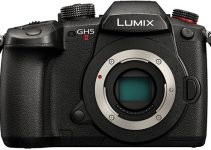When you’re operating a mirrorless camera like the Sony A7III, it’s best to spend time fiddling around with the menus to determine how to get the best images from your gear. One of the most difficult settings to adjust mainly have to do with colors, with the primary focus being on obtaining perfect skin tones. However, with all the color profiles Sony includes with their camera, it can be particularly overwhelming to find which one would produce the best results for skin.
Fortunately, filmmaker Dave Dugdale has already done some thorough testing in that regard as he outlines the best color profile for great skin tones using the Sony A7III. In the video below, he also provides the optimal settings for each preset, which seems to be a huge time saver, especially for those who may need to figure out these adjustments from scratch.
After having gone through most, if not all the color profiles Sony offers on the camera, it’s safe to say that Standard is the best profile for skin tones. That’s not a big surprise since with contrast, saturation, and sharpness kept at 0, the profile produces the flattest and least processed image, resulting in a more true-to-life color in the skin tones.
Compared to other presets, the Standard profile doesn’t emphasize any particular aspect of the image, whether it be highlights or shadows. In addition, using any other profile would produce undesirable shifts in color that not only throw off skin tones but also affect other aspects of the shot. For example, the Clear profile shifted the colors of the Dugdale’s shirt to a darker teal compared to the colors found using the Standard profile, all while undesirably increasing contrast.
The differences found in the rest of the profiles are less prominent even though they still affect skin tones in one way or another. Here are just a few examples.
While Standard may be the color profile you’re most likely to use, Dugdale did note one exception. For stage performances where there is an abundance of key light and lack of fill, the Night profile with the Contrast and Saturation set to -1 seems to work better than Standard. Even though the skin tones may not be as color accurate as in the Standard profile, the Night profile presents slightly more dynamic range.
As for the black and white images, it turns out that it’s better to desaturate your video in post rather than using the in-camera Monochrome profile, unless you are going after the more contrasty look the latter produces. The same applies to the Sepia profile as well.
Although the profile comparisons found in the video provide a lot of insight, the profile you choose to shoot with ultimately depends on your particular filming scenario.
If you’re someone who prefers more stylized looks, profiles such as Landscape or Sunset may work for you. On the other hand, if you’re a cinematographer who favors an aesthetic that provides more natural and life-like skin tones, using the Standard profile may be indeed the way to go.
[source: Dave Dugdale]
Order Links:
Sony Alpha a7 III Mirrorless Digital Camera (Body Only) (B&H, Amazon)
Disclaimer: As an Amazon Associate partner and participant in B&H and Adorama Affiliate programmes, we earn a small comission from each purchase made through the affiliate links listed above at no additional cost to you.




